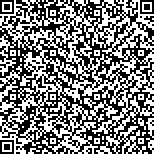|
| 引用本文: | 杨俊芳,万剑华,马毅,姜宗辰,胡亚斌.高光谱特征波段在海洋典型溢油油种识别中的精度评估[J].海洋科学,2021,45(4):97-105. |
| |
|
| |
|
|
| 本文已被:浏览 2185次 下载 705次 |

码上扫一扫! |
|
|
| 高光谱特征波段在海洋典型溢油油种识别中的精度评估 |
|
杨俊芳1, 万剑华1, 马毅2,3, 姜宗辰2,4, 胡亚斌2
|
|
1.中国石油大学(华东), 山东 青岛 266580;2.自然资源部第一海洋研究所, 山东 青岛 266061;3.自然资源部海洋遥测技术创新中心, 山东 青岛 266061;4.山东科技大学, 山东 青岛 266590
|
|
| 摘要: |
| 溢油种类精准识别对快速有效地治理污染具有重要的意义,高光谱遥感在海面溢油油种识别中至关重要。为探讨海洋典型溢油油种识别的高光谱特征波段范围,通过设计室外模拟溢油实验,在获取原油、燃料油、柴油、汽油和棕榈油等5种油种的实测高光谱数据基础上,运用因子分析和光谱标准偏差分析法遴选溢油油种的光谱特征波段,并利用支持向量机模型开展基于光谱特征波段的油种识别精度评价。结果表明,基于光谱标准偏差分析和因子分析获得的特征波段的油种识别精度分别是83.33%和90.74%,与基于全波段的识别精度相比,整体精度分别提高了3.7%和11.11%。选取的特征波段(360~540 nm,560~600 nm,610~630 nm,640~660 nm)可作为5种油种相互区分的最佳高光谱波段。 |
| 关键词: 高光谱数据 光谱分析 最佳波段 油种识别 精度评价 |
| DOI:10.11759/hykx20200720003 |
| 分类号:P76 |
| 基金项目:国家重点研发计划项目(2017YFC1405600);国家自然科学基金重大项目课题(61890964);山东省联合基金项目(U1906217);国家自然科学基金青年项目(41706208);国家自然科学基金面上项目(42076182) |
|
| Accuracy assessments of hyperspectral characteristic wavebandfor common marine oil spill types identification |
|
YANG Jun-fang1, WAN Jian-hua1, MA Yi2,3, JIANG Zong-chen2,4, HU Ya-bin2
|
|
1.China University of Petroleum, Qingdao 266580, China;2.First Institute of Oceanography, Ministry of Natural Resources, Qingdao 266061, China;3.Technology Innovation Center for Ocean Telemetry, Ministry of Natural Resources, Qingdao 266061, China;4.Shandong University of Science and Technology, Qingdao 266590, China
|
| Abstract: |
| Accurate identification of the oil spill type is of great significance for rapid and effective treatment. Hyperspectral remote sensing plays an important role in oil spill identification. In order to explore the hyperspectral characteristic wavebands of marine oil spill types identification, we designed an outdoor oil spill experiment. The spectral characteristic wavebands were selected by factor analysis and spectral standard deviation analysis methods based on the measured spectral reflectance data of crude oil, fuel oil, diesel oil, gasoline and palm oil. Oil type identification accuracy evaluation were performed using the Support Vector Machine (SVM) model. The results show that oil type identification accuracy using characteristic wavebands obtained by spectral standard deviation analysis and factor analysis are 83.33% and 90.74%, respectively, and the overall accuracy is improved by 3.7% and 11.11% respectively compared with that using the full spectrum. The selected characteristic wavebands (360~540 nm, 560~600 nm, 610~630 nm, 640~660 nm) can be regarded as the best hyperspectral wavebands to distinguish the five common oil types, which has a good reference significance for the realization of on orbit rapid processing of oil spill image. |
| Key words: hyperspectral data spectral analysis optimal waveband oil type identification accuracy assessment |
|
|
|
|
|
|
